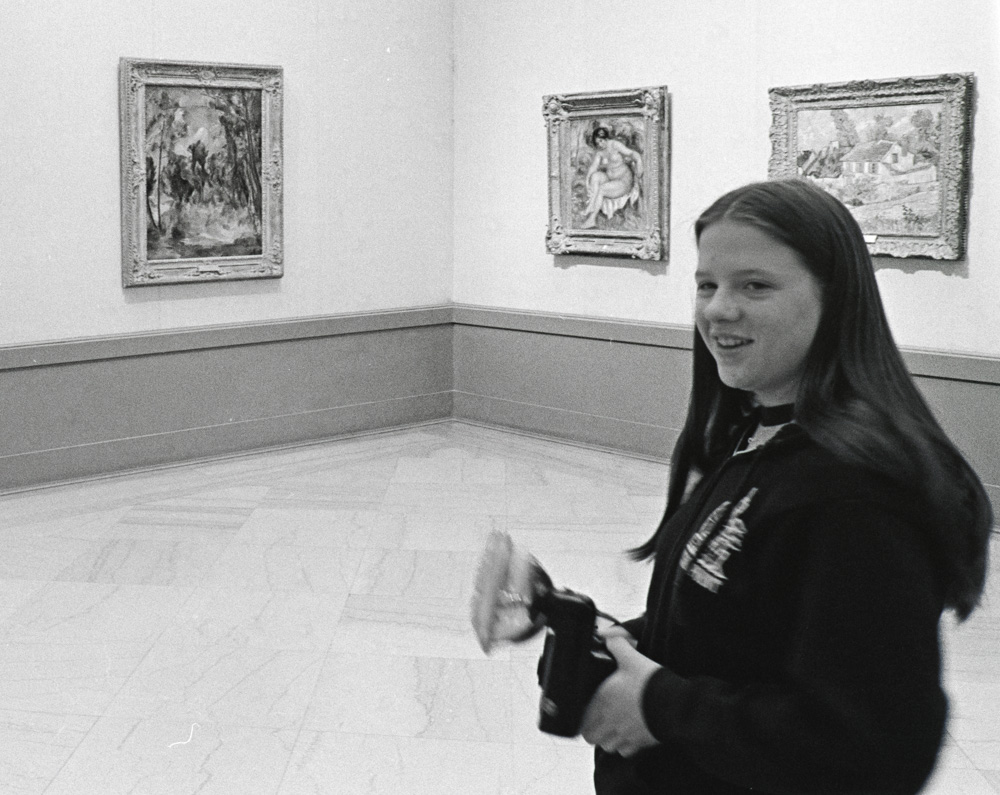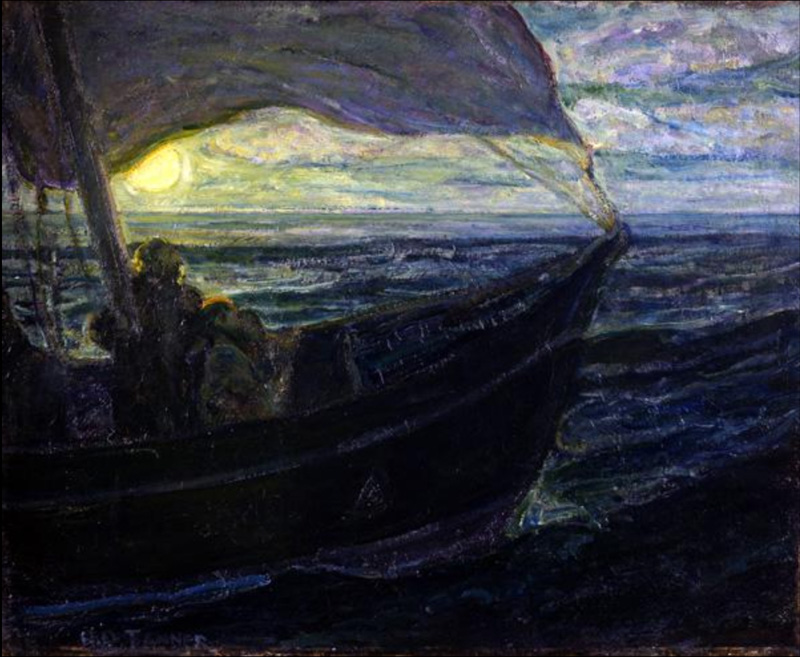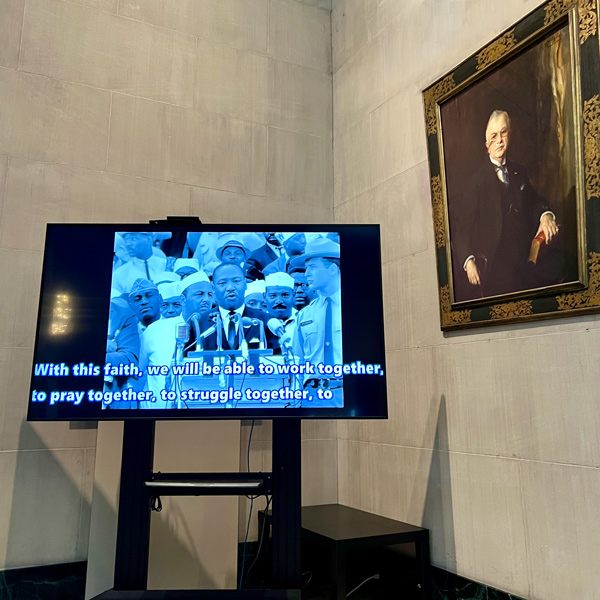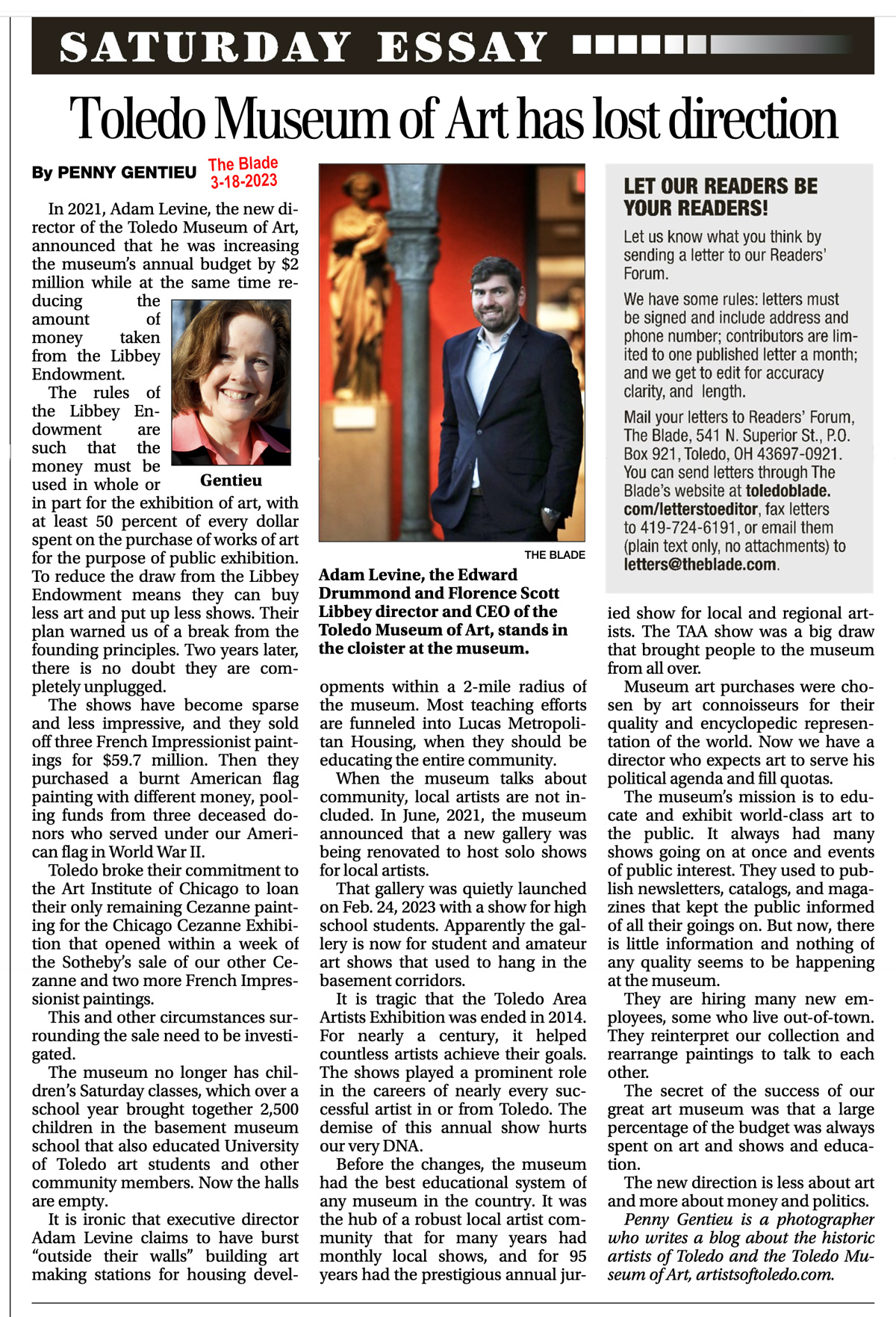Our museum should not be a catalog for billionaires to add to their art collection at our expense.
The day I shot these photos, on October 13, 1979, I was teaching a children’s Saturday photo class. It took place under the stage of the Peristyle. We went up to the galleries, as Saturday classes often would.
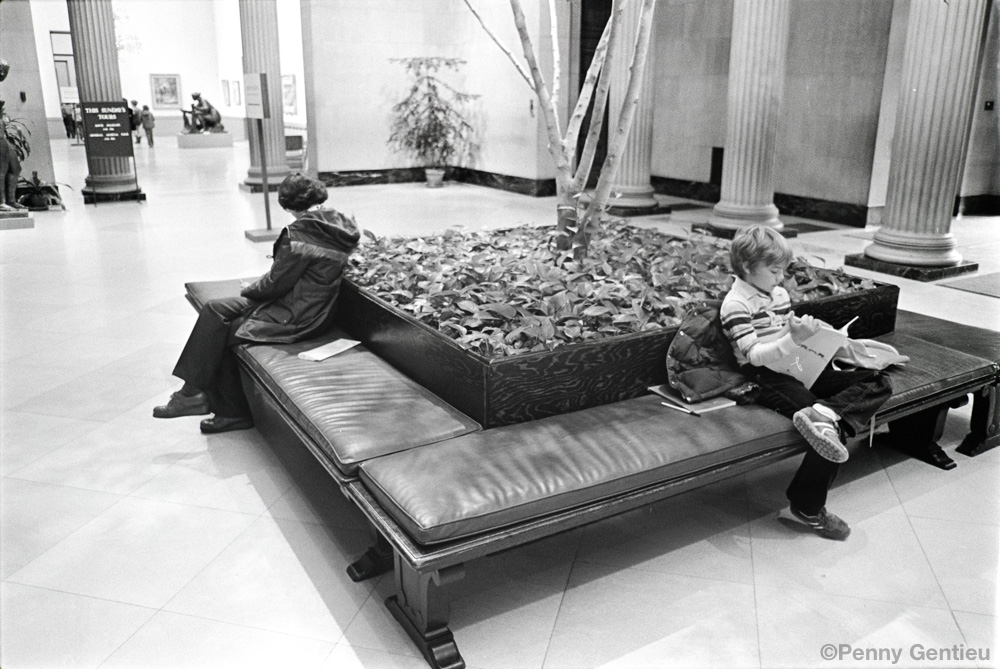
This photo is of the center entrance of the museum. The first gallery a visitor would come to was that gallery in the upper left, and on view here, in the distance, is the famed Cezanne, The Glade, that Adam Levine sold at auction on May 17, 2022, touting it was necessary in order for diversity.

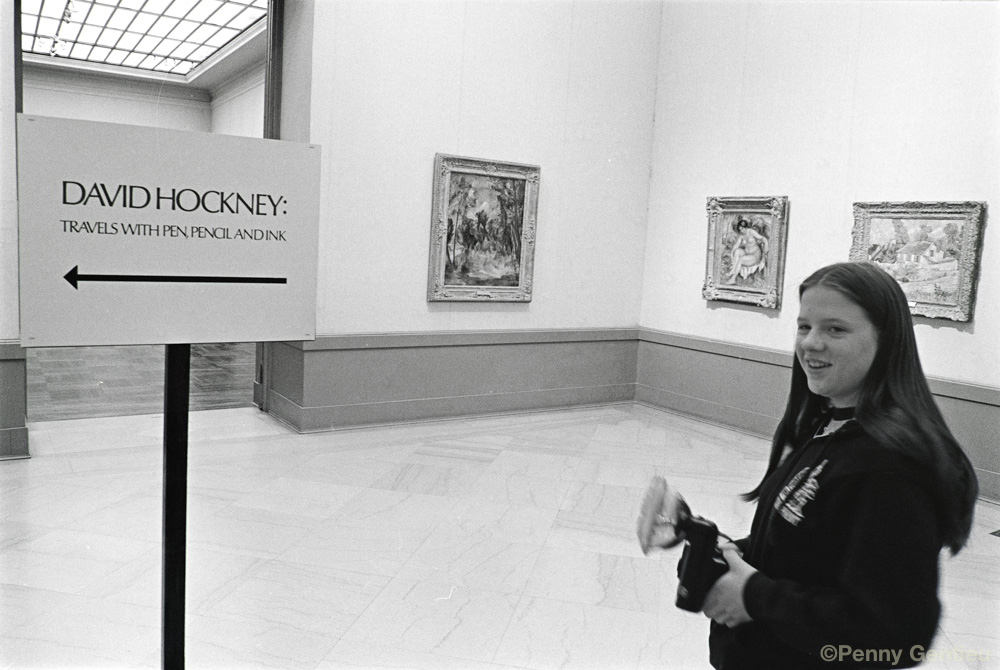
This is a student in my class. She’s taking her first photo — in it appears The Glade by Cezanne, which is right next to Renoir’s Bather, which was also sold off by Adam Levine.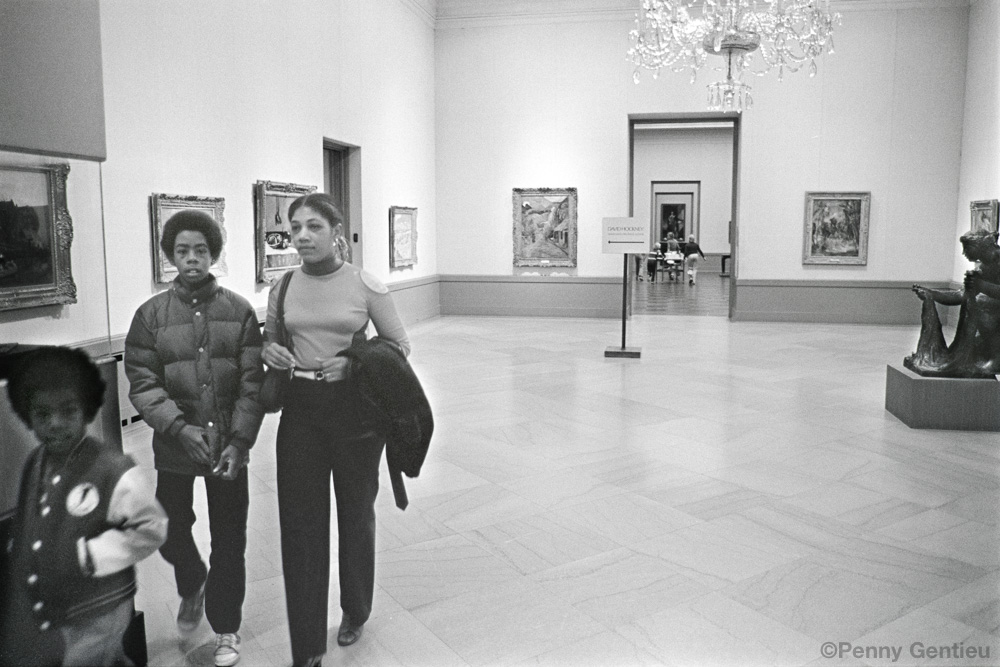
This photo shows a diverse group of people in that very gallery — so why did Adam Levine think that the museum did not attract diversity? Is it because he was using diversity as a smokescreen for his outrageous sale of three French Impressionist paintings, two of which were bought with funds from the Edward Drummond Libbey Endowment and were Libbey’s gift to to the people of Toledo, but Adam Levine took those proceeds and funded a separate private fund devoid of public scrutiny and against the wishes of the Libbeys — in the amount equal to that of the Libbey Fund?
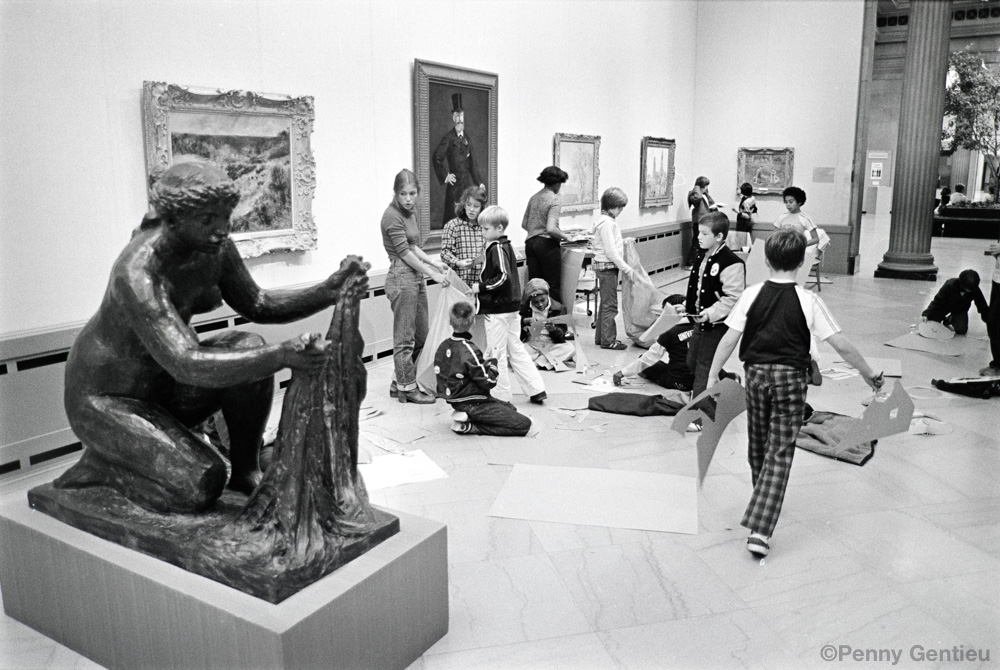
Right next to the Cezanne and the Renoir paintings that Adam Levine sold is Renoir’s sculpture of a bather, shown here on the left. Adam Levine considered the painting of the bather by Renoir redundant and not necessary for the museum to keep, since they had the sculpture of the bather by Renoir. He said that the museum never intended to have more than one example of any one artist so therefore they sold the Renoir painting of the bather. Note the diverse group of children drawing on the floor in this room.
 After leaving the first gallery, where the Cezanne and Renoir paintings were shown prominently, a visitor would enter the next gallery, where one of the first paintings in the gallery hanging on the right would be Henri Matisse’s Fleurs ou Fleurs devant un portrait that Adam Levine also sold. Here, a visitor examines a sculpture by Aristide Maillol (1861-1944), Le Monument à Debussy, (in conversation with the Renoir sculpture in the first gallery) with the Matisse painting hanging in the background.
After leaving the first gallery, where the Cezanne and Renoir paintings were shown prominently, a visitor would enter the next gallery, where one of the first paintings in the gallery hanging on the right would be Henri Matisse’s Fleurs ou Fleurs devant un portrait that Adam Levine also sold. Here, a visitor examines a sculpture by Aristide Maillol (1861-1944), Le Monument à Debussy, (in conversation with the Renoir sculpture in the first gallery) with the Matisse painting hanging in the background.
Important to the museum’s collection.
So that’s three very famous, highly valuable paintings that were prominently on display at the Toledo Museum of Art, showing that these were the first paintings out of hundred of works of art that a museum visitor would encounter. But in 2022, these highly valuable paintings were called redundant and mediocre by Adam Levine, and sold for “diversity,” supposedly.
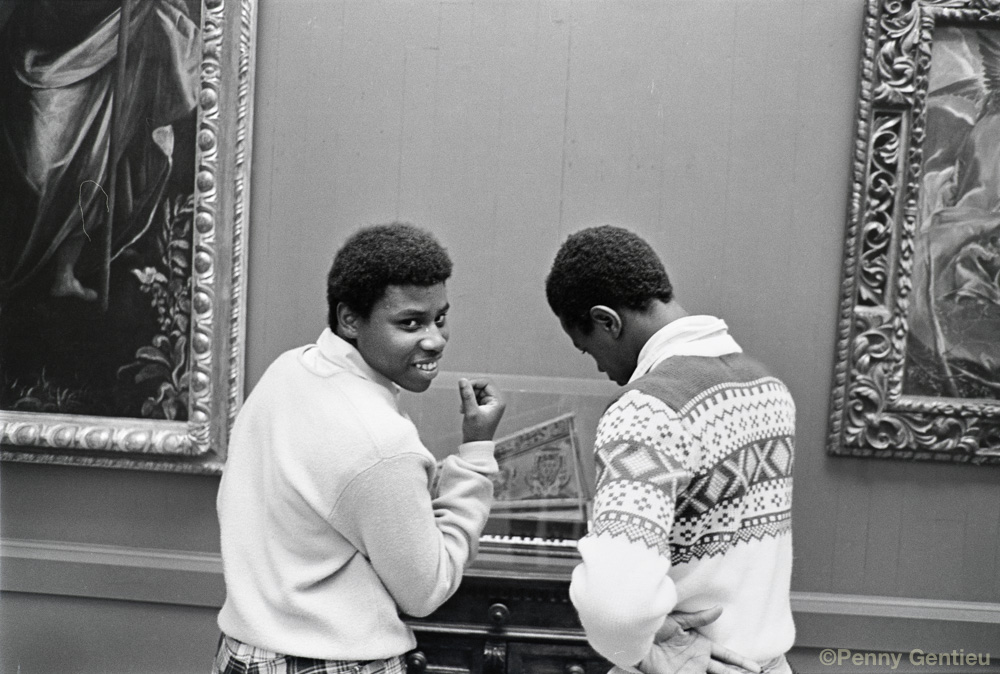
Here are two young black men enjoying the museum. This was in 1979. The museum has always had a diverse audience. But now Director Adam Levine keeps careful head count, mapping and going out of his way to exploit diversity or is that just a cover for the unconscionable sales he made of the museum’s great artwork?
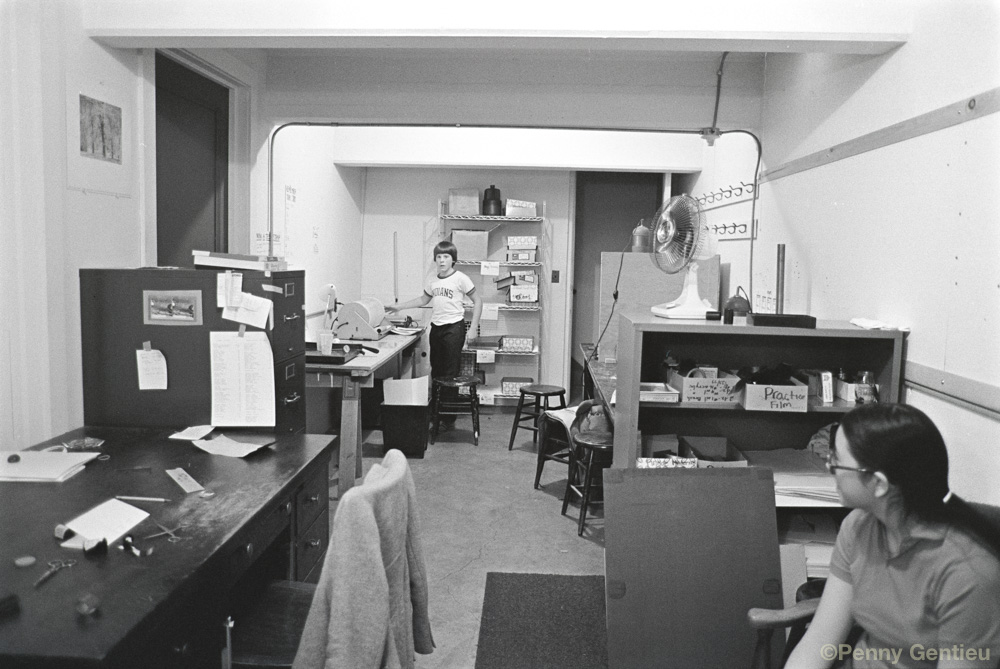
Here’s a shot of the photography classroom under the stage of the Peristyle. In the background, a student is drying his print on the ferrotyping drum.
Incidentally, the children’s Saturday photography classes have also disappeared.
Photography is such an interesting medium. How could I have known then, when I was taking these photographs, that they would have such meaning today?
43 years later, three important and significant paintings that were hanging in the museum’s main galleries would be shipped to Sotheby’s where the Cezanne and the Matisse would be sold to the same buyer, for $57 million, and all three, grossing $61 million, would duplicate the value of the Edward Drummond Libbey Endowment Fund, putting the money into a private fund, not subject to public scrutiny, and skirting past Libbey’s rules and wishes for the museum that the Libbeys began. Reducing the art collection and taking away Libbey’s legacy. Shame on Adam Levine and shame on each one of the museum board members and Libbey Endowment trustees for their total breach of fiduciary duty and loyalty to the Libbey Trust and to the Toledo Museum of Art.
We will never see the paintings on the museum walls again. But I have photos. And this story to tell.
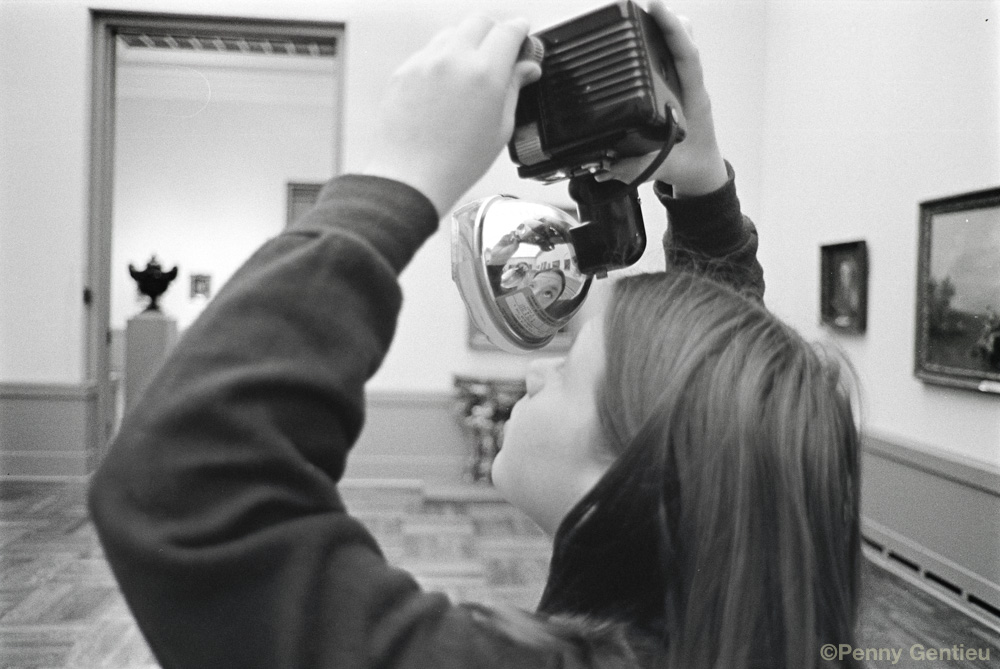
(If you zoom in on the flash, you will see me there.)

I am hoping that the findings of the Charitable Law Section of the Ohio Attorney General, which has been investigating the museum and the Libbey Trust for about five months now, will be bringing justice to Libbey’s trust, to our museum, and to the people of Toledo. The Ohio Attorney General’s office has the power to find out who bought the paintings and under what circumstances. They can investigate all the inner workings of the board of directors and the trustees of the trust that let this happen. They can do a complete audit. Can Adam Levine and the trustees of the museum and the Libbey trust actually be allowed to transform Libbey’s endowment into private funds devoid of the restrictions of the Libbey Endowment?

